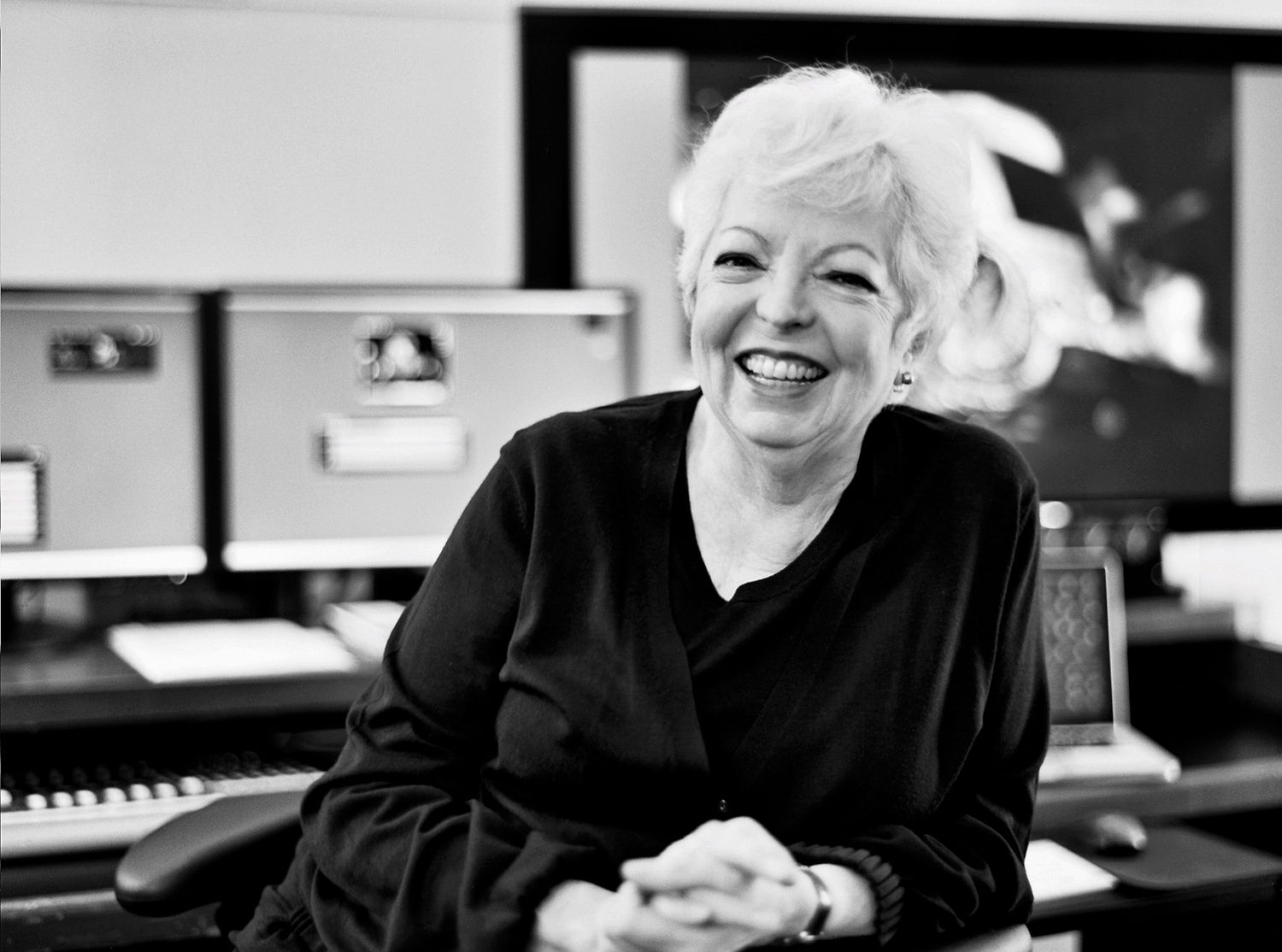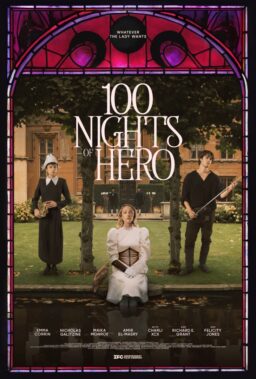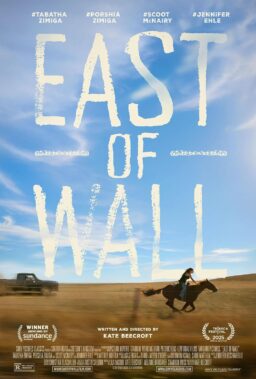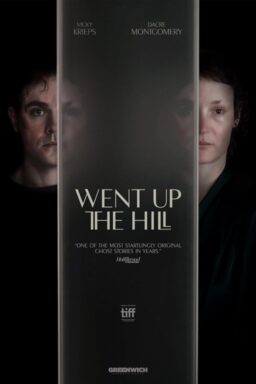“From my earliest theatre going days I have been a lover of Grand Opera. The physical drawbacks of the average operatic production have often bothered me … The only satisfactory frame of mind to bring to the theatre was to say to oneself, ‘Well – you can’t have everything.’ Your production of ‘Tales of Hoffman’ has proven that you can have everything.” – Cecil B. DeMille, letter to Michael Powell and Emeric Pressburger, February 29, 1952
The movie that inspired such diverse directors as Cecil B. DeMille, Martin Scorsese, and George Romero, “The Tales of Hoffmann,” directed by partners Michael Powell and Emeric Pressburger, is a dream of opera fully-realized, utilizing dance and music and extraordinary production design in ways that still seem radical and unprecedented. Based on composer Jacques Offenbach’s final opera from 1881 (which was, in turn, based on three stories by the German Romantic author E.T.A. Hoffmann), “The Tales of Hoffmann” tells the sad story of the loves of a man named Hoffmann, and his journey through an increasingly decadent and disturbed world. Powell and Pressburger were inspired by the story, and inspired by the challenges of filming an opera. Much of the team for “The Red Shoes” was re-assembled for “Tales of Hoffmann”: Moira Shearer, Ludmilla Tchérina, Robert Helpmann, and Léonide Massine, all in crucial roles, with choreography by Frederick Ashton, and conducted by Thomas Beecham with the Royal Philharmonic orchestra. Hein Heckroth won an Academy Award for the Art Decoration in “The Red Shoes,” and he designed “Tales of Hoffmann” as well (for which he was nominated for an Oscar.)
As Martin Scorsese observed, “‘The Red Shoes’ is filled with music and dance. ‘The Tales of Hoffmann’ IS music and dance.” George Romero said of the film, which he first saw at the age of 12, “It was really a movie for me, and it gave me an early appreciation for the power of visual media – the fact that you could experiment with it…. That made me feel that, gee, maybe I could figure this medium out.”

“Tales of Hoffmann” was filmed to a playback of the score, with dancers lip-synching to previously recorded songs. With the obligation to synch up sound eliminated, Powell and Pressburger were set free visually. From the first shot to the last, the film immerses the audience in a perfectly melded world of camera movement, dance, and production design. There are many extraordinary sequences: a gigantic staircase painted on the floor, with two dancers running up and down the “steps,” shot from above; a thrilling duel in Venice; an entire scene with dolls come to life, mechanical and awkward; weathervanes spinning this way and that, the fairy-tale-like shot that opens the film. Seen on a large screen, “The Tales of Hoffmann” is overwhelming. Pure cinema. The film stars Moira Shearer, the superb Robert Helpmann in multiple roles, and handsome Robert Rounseville as the melancholy hero Hoffmann, who tells his “tales” to a debauched group in a tavern during an intermission of an opera production next door.
Thelma Schoonmaker, Oscar-winning editor for Martin Scorsese (and wife of the late director Michael Powell), supervised the new 4K restoration of “The Tales of Hoffmann”, through the Film Foundation and the BFI National Archive, in association with StudioCanal. The restoration includes some never-before-seen footage, rediscovered through the restoration process and put back into the film. “The Tales of Hoffmann” is a spectacle, meant to be seen on the large screen, and it will play at The Film Forum in New York starting March 13, introduced by Schoonmaker via Skype.
Schoonmaker took time out of filming in Taipei (where she is on location with Martin Scorsese), to speak with me about “The Tales of Hoffmann.”
You have spoken about how Michael Powell and Emeric Pressburger filmed “The Tales of Hoffmann” essentially as a silent film. That approach gave them a sense of freedom in terms of the choreography of the camera. I would love to hear a little more about that.
They used a big old studio on the Shepperton lot which had been used for “Things to Come“, a famous futuristic film done in the 1930s. But they didn’t need sound so much back then so it wasn’t sound-proofed. Since they shot [“Tales of Hoffmann”] to the playback of this wonderful score, Michael Powell said, “Great, let’s just shoot it like a silent film.” The Technicolor camera had this huge blimp around it to deaden the sound of the three pieces of film going through it. It was so big they called it “The Enchanted Cottage.” [laughs] Because they shot to the playback, they were able to take that blimp off and that freed up the camera so that it was about the size of a camera today. Jack Cardiff was able to do that in “The Red Shoes” at one point: he put ropes around the camera, and he and his assistant swung the camera physically back and forth for those wonderful shots of the ballet in “The Red Shoes”. And that’s what they were able to do with “Tales of Hoffmann.” As Scorsese says, the camera just dances.
Hein Heckroth [production designer] had actually done three productions of “Tales of Hoffmann” as an opera, designing the sets back in Germany. But here he was able to just fly with his incredible ideas. Every time I would go back and forth during the restoration and look at things. I would see another detail, like the eyes on the back of Robert Helpmann’s coat… I never got tired of watching it.
I also think the fact that dancers were used instead of opera singers for most of the parts … of course Robert Rounseville and Ann Ayars are real opera singers … but that was a very gutsy decision to use dancers. In fact, it works like crazy, because instead of the singer standing there singing, you’ve got movement, dance, wild things going on, things they could never do in an opera onstage. That was such a brilliant decision. Ballet dancers really know how to enter a room.
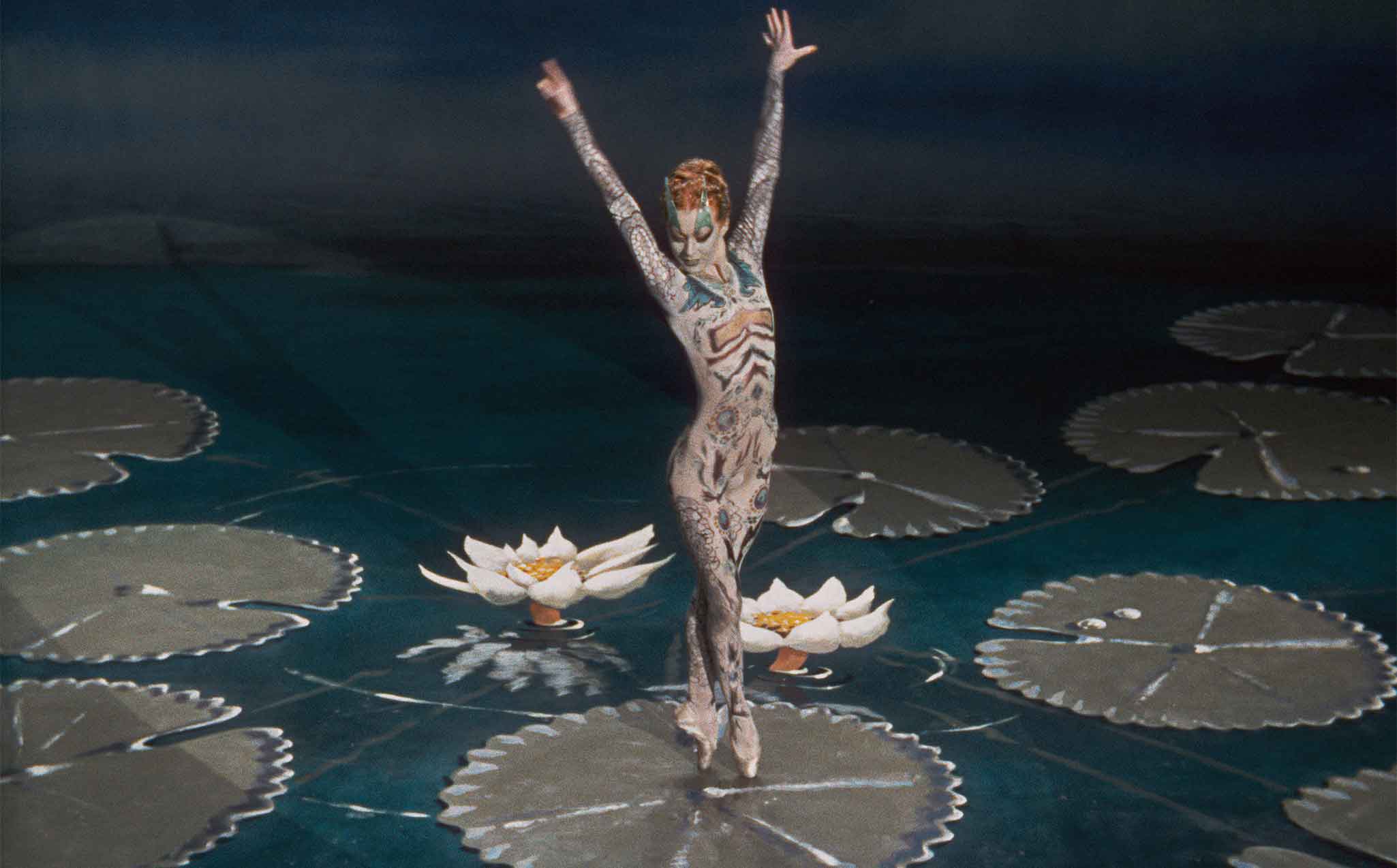
One comment really struck me from Scorsese’s introductory words about the film, shown before the screening. He says, “‘The Red Shoes’ is filled with music and dance. ‘The Tales of Hoffmann’ IS music and dance.” It’s wonderful context, that introduction, because then the first thing you see onscreen in “Tales of Hoffmann” is those twirling weathervanes. And there it is, there’s exactly what he was talking about.
Isn’t that a brilliant idea? Scorsese, of course, when he first saw the movie and started becoming entranced by it – that was the first thing that grabbed him, too. George Romero is as obsessed with the film as Marty is.
I love the stories of the two of them passing the print back and forth between them because there was only one print available.
I was a witness to that. It was so funny. Marty would say, “Why do I have to give up this print?” Because George wanted to see it again! And you know Marty would thread the print himself because there was no video available at that time. He’d thread up the print over and over and over again, and watch it obsessively, because it was teaching him so much about how to make the camera fluid, how to bring emotion out.
William Germano has written a wonderful little book about the movie that’s just out by the BFI and he noted that in the opera when the doll is torn apart, it all happens offstage, and they throw her limbs back out onto the stage. But in the film, you actually see her getting torn apart, and it’s so shocking. Michael always wanted to thrust his visual effects into the audience’s eye and not be afraid of them. He wanted to make you believe. That is such a shocking sequence.
Her leg is still moving!
Yes, her leg is still moving! With the black velvet around it. It’s shocking.

In regards to the restoration of the film: There’s some footage you discovered that you put back into the film in this process?
Yes. In the third act, there’s an additional 6 minutes, which shows the father getting angry at his daughter because he’s afraid that the influence of her mother is going to make her want to sing again and he knows that if she sings she’s going to die. That part was removed from the original film, and I think it weakened the third act a lot. I showed “Tales of Hoffmann” at Lyon in the festival last year, and Bertrand Tavernier, the great French film director, said that the new footage really restored the third act for him.
I think the anger of the father gives you more of a sense of the peril she is in. And [Alexander] Korda had made them cut it, and my husband was very angry about it, so we were delighted to put it back.
And then, at the very end, the introduction of the cast members was also restored. I saw it as we were restoring the film. We got to the end and all of a sudden this little scene came up and I said, “What is that?” And they said, “Oh, this is something we don’t have the sound for, so we’re not going to restore it.” I said, “Oh my gosh, yes, we are, it’s so brilliant!” I created the sound for it with music and applause. No one has ever seen that footage before. It wasn’t even in the initial release.

It’s so beautiful because then you get to see who’s been doing all that singing. And there’s an old-school humility about it, too, dancers bowing to the singers, the singers bowing to the dancers. It’s so theatrical.
Yes! There’s that scene of Moira Shearer as the doll dancing, and there’s an incredible piece of music there, very hard to sing – and so to finally see the person who sang it! And then the wonderful Ludmilla Tchérina who played the vixen in Venice, so sexy, and then you see the woman who voices her is wearing this dowdy pink dress. It’s wonderful, she had such an incredible voice! The whole scene is framed in the magic spectacles, also such a brilliant idea, and obviously Korda must have said, “The film is too long. Cut it” and so nobody ever saw it. But there it was on the original negative. It was a thrill, I can’t tell you.
I loved that final moment because you got to revel in what you just saw. It gives you that moment that you have at the end of a live performance, where you get to acknowledge the cast by clapping for them.
I’m so glad you responded to it like that.
There were so many extraordinary moments of filmmaking and design and movement. The overhead shot of the staircase painted on the floor and the two of them running up and down the steps.
They didn’t have money, and they were told it would cost £8,000 to build the stairs, so Michael said, “Well, let’s just paint them on the floor, we’ve been painting everything else.” And of course the dancers never could have danced down a set of stairs like that, but when they’re painted, they can! There’s also the beautiful painted lily pads, in the very beginning in the Dragonfly Ballet. I love when you realize Moira Shearer is dancing on a lily: it’s painted on the floor but it has a 3-D feeling to it. Hein Heckroth was given the credit “Designed by Hein Heckroth” – because both Michael and Emeric felt that he was so much a part of it that instead of “Art Direction” or “Set Direction”, it’s Designed by Hein Heckroth. And boy is it.
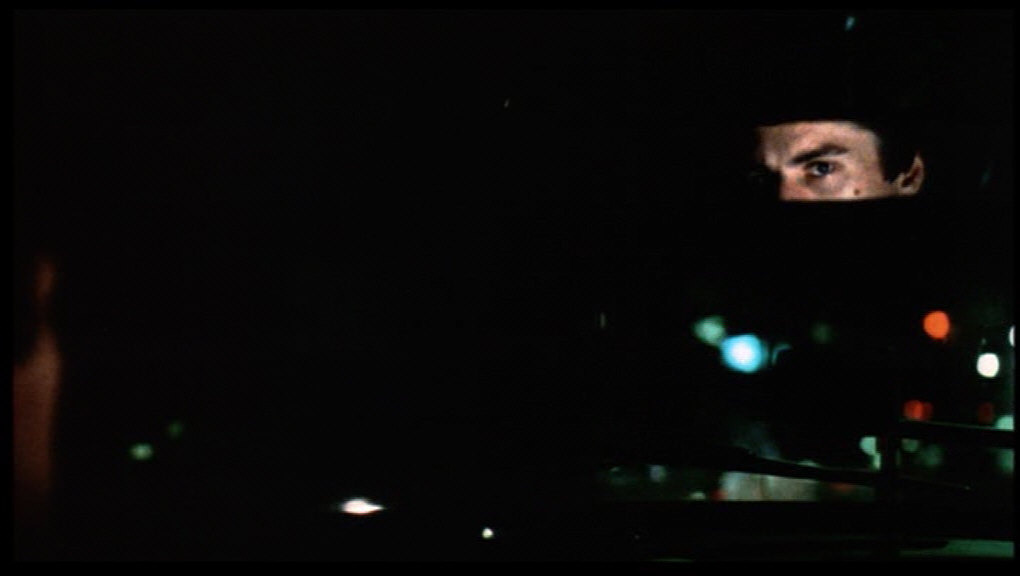
Has “Tales of Hoffmann” influenced you in your work as an editor?
Yes. Definitely. Powell and Pressburger never worried about lack of continuity in their movies and that’s something that Scorsese and I agree with. There are people who spend their lives sitting in front of a TV with a remote, saying, “That’s a bad cut there because this doesn’t quite match.” Well, movies for 100 years have had bad continuity and it doesn’t matter. So that attitude has encouraged us a great deal.
But I think in terms of editing: the duel sequence in Venice is one of the most beautiful pieces of editing I have ever seen. I could watch it over and over. It is stunningly edited. I don’t know whether Michael had that in mind when he shot it, or whether Reginald Mills, the great editor, was responsible, but I have a feeling Michael had it in mind the way he shot it. Scorsese said to me, “You realize there are no sound effects in that duel.” You don’t hear swords clashing. Again, the silent film idea – because it’s the music that matters and the visuals that matter. That is a perfect example of how they made it as a silent film. When you see it again, watch the editing in that duel sequence.
I will.
Scorsese, of course, was so influenced by Robert Helpmann’s eyes in “Tales of Hoffmann.” You can see that influence in the eyes of De Niro in “Taxi Driver“, seen in the mirror in the cab.
That’s amazing.
Those eyes, De Niro’s eyes, are directly influenced by Helpmann and “Tales of Hoffmann.”
The new restoration of “The Tales of Hoffmann” will run at The Film Forum in NYC from Friday, March 13 – Thursday, March 19. On March 13, Thelma Schoonmaker will introduce the film via Skype. On Saturday, March 14, George Romero will be there in person to introduce the film. Information here. It will also play at the Cinefamily in Los Angeles, starting March 13th.

